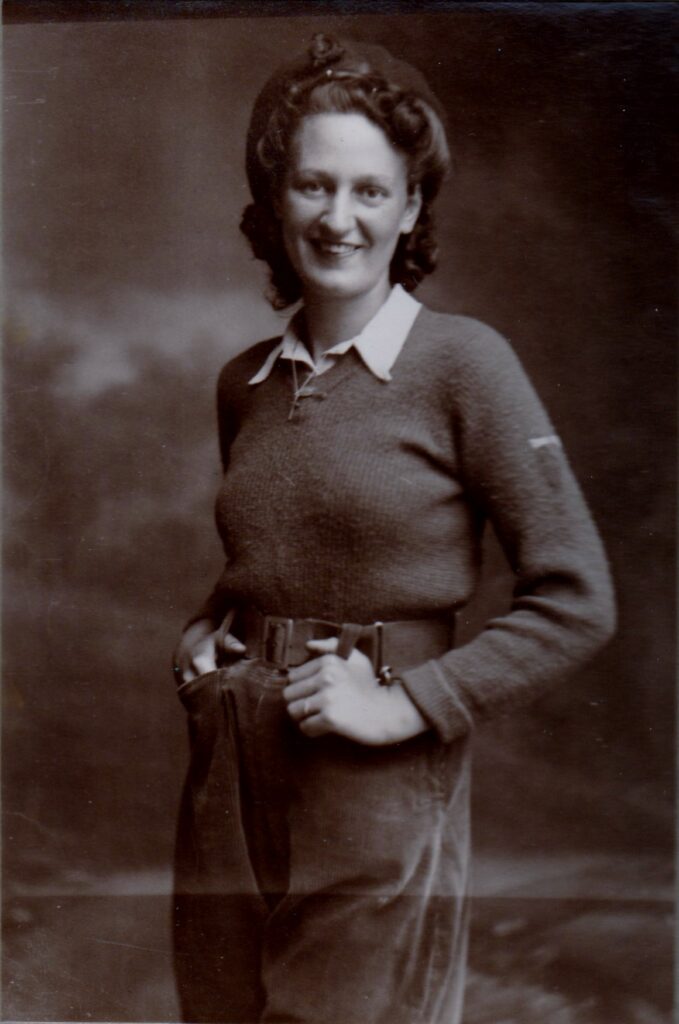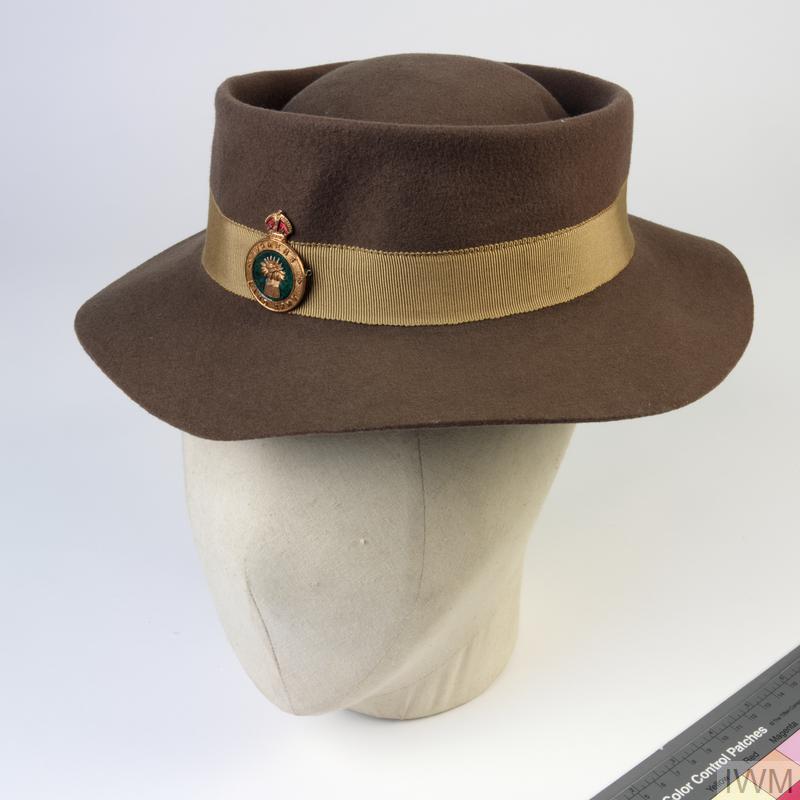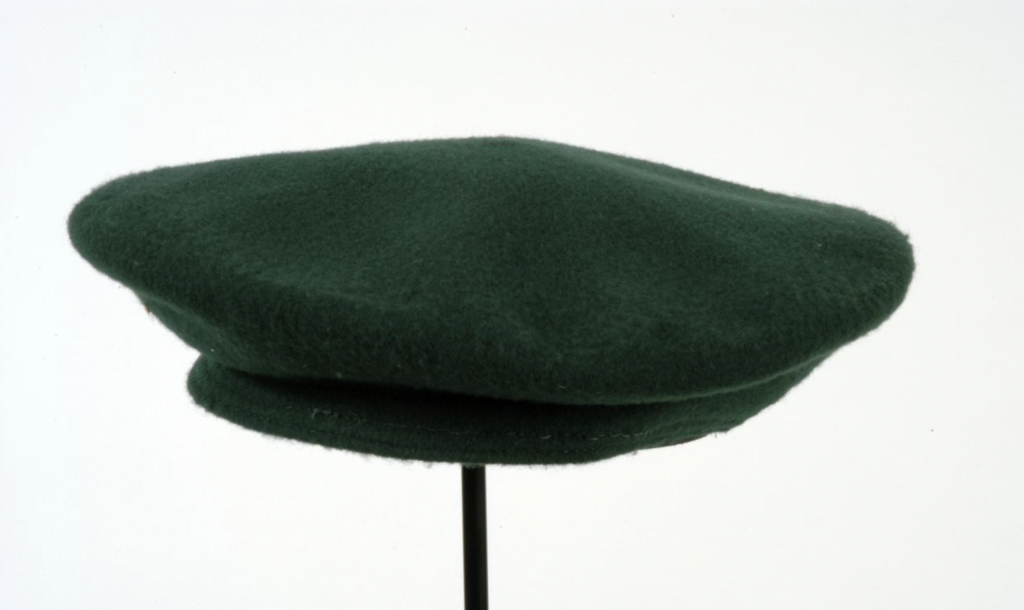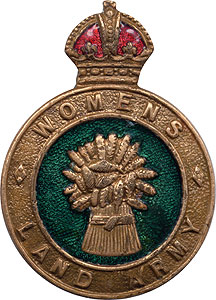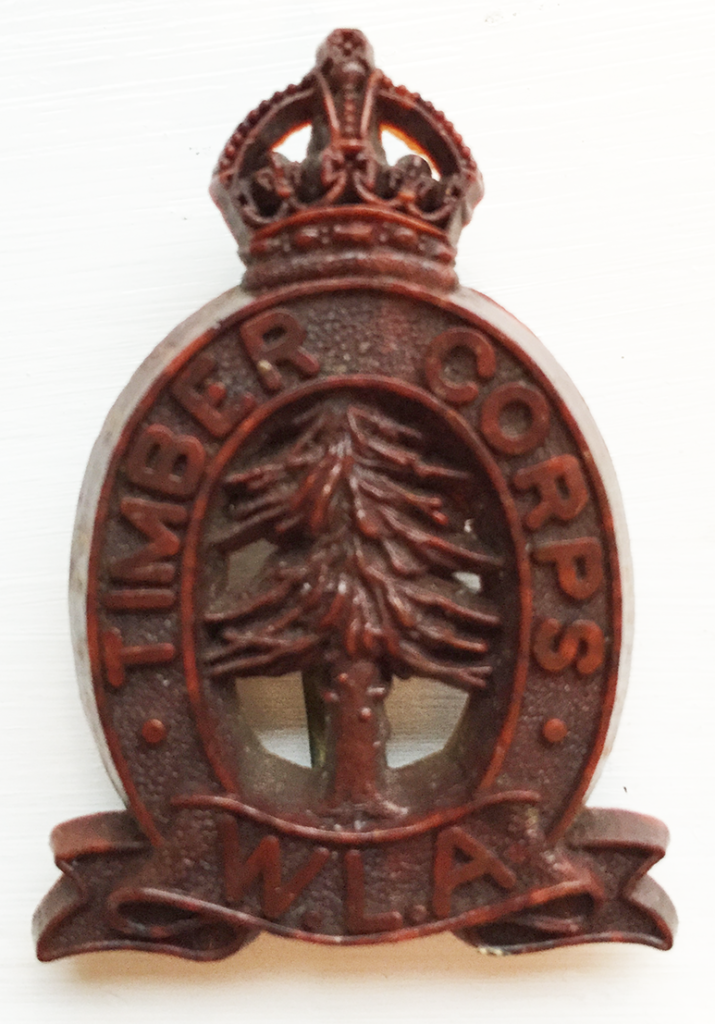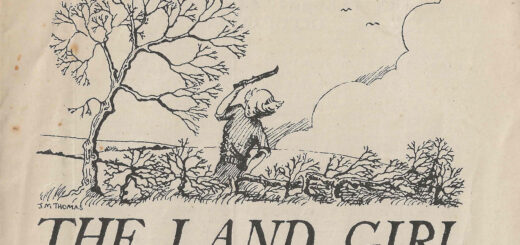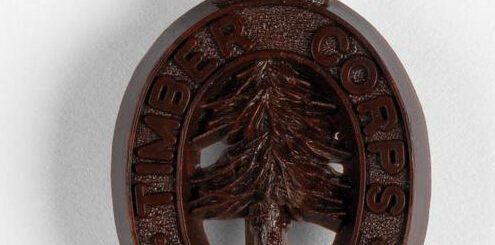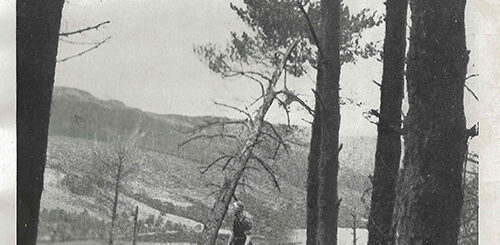March WTC Photo of the Month
This month we focus on a portrait shot of Lumber Jill Phyllis Staves. We don’t know much about Phyllis’ time in the Timber Corps, nor this particular photograph. But what we do know is that this photograph was taken in 1942 or 1943 at a A.H Weale’s photography studio in Victoria Road, Tamworth in Staffordshire. (Weale was a leading Tamworth photographer, who had previously served as Tamworth Borough Councillor and as Tamworth’s Mayor from 1933-34.)
Though it’s hard to tell, Phyllis’ uniform appears in good condition. We can assume then that Phyllis arranged for a photographer to capture her at the beginning of her time in the WTC, so that her parents could see their daughter in her Lumber Jill uniform.
While working in Tamworth, Phyllis lived with the Walker family. Phyllis’ photograph offers a useful way to consider two of the distinctive parts of the Women’s Timber Corps uniform – the beret and the badge.
Compared to the Women’s Land Army cowboy style hat, the beret, made out of green felt, signified that Lumber Jills were members of the Women’s Timber Corps. Though the Women’s Timber Corps was a civilian organisation (despite being labelled ‘Corps’) the beret was in fact similar to those issued by military organisations during the war. The uniform then visually blurred the boundaries between women’s civilian and military identity. Though women wouldn’t have always worn their berets out in the forests, the beret was a key marker of their independence as a civilian organisation.
Writing in the May 1944 edition of The Land Girl, Doris Walford recalls working in the forestry section of the WLA before working for the Women’s Timber Corps:
Like children, we were proud of our independence: we got together, and to see a green beret was to see a sister, and green berets stood a little aside from brown hats, perhaps.
Doris Walford in The Land Girl, May 1944, p.15.
Vita Sackville-West, reflecting on Gala Day in Kent in September, also commented how many Land Girls were envious of the Lumber Jill beret.
In November 1950, some lucky Land Girls had the opportunity to wear the beret at the WLA’s disbandment parade. Land Girls wore their cowboy style in all manner of styles. Having hundreds of women wear their hat in different ways would have been inappropriate for the final wartime outing of Land Girls. As a solution, organisers issued Land Girls with berets – simply because they could be worn in a more consistent style.
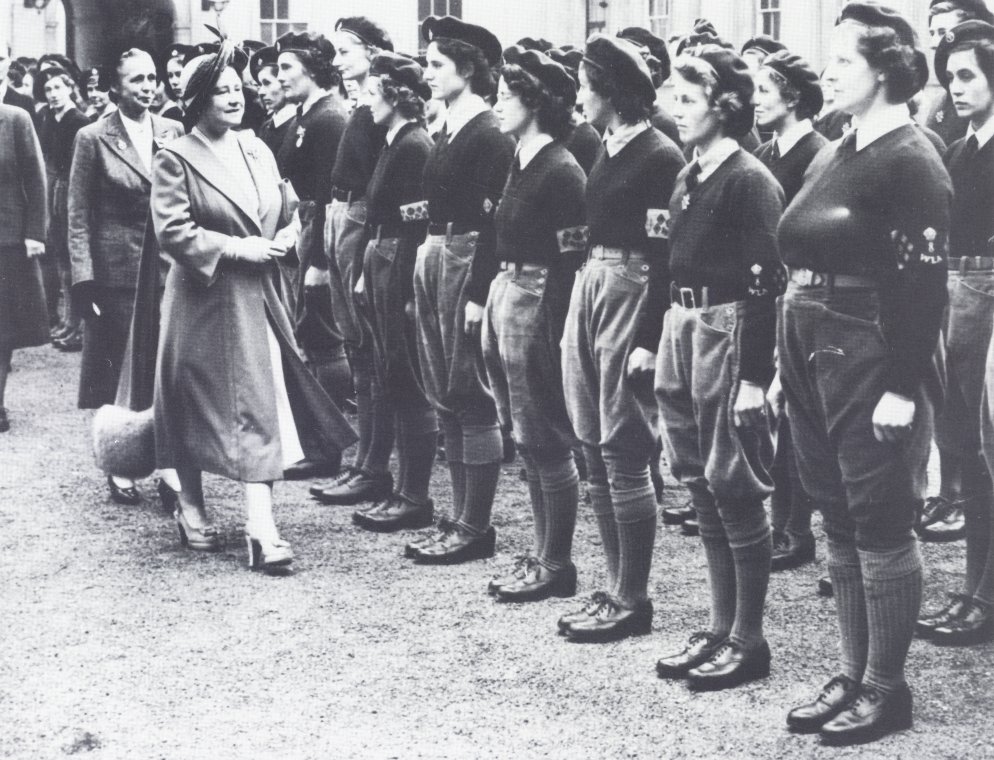
Photo source: Museum of English Rural Life, University of Reading (Ref. P FW PH2/R72/1)
Courtesy of Stuart Antrobus
Contrasted against Phyllis’ green beret was her WTC badge. The plastic badge centres on a fir tree, framed in an oval ring with the words ‘Timber Corps’, topped with a crown. At the bottom, the words WLA highlighted the WTC’s roots in the WLA. A single colour however made the badge visually striking, especially when worn against the dark green beret.
Phyllis appears relaxed in her uniform, with her thumbs casually latched through the belt hooks of her breeches. Phyllis’ smiling gaze and relaxed posture seems to speak of her pride at wearing her uniform and her new wartime identity as a Lumber Jill.
**Update: If you look carefully, you can see a cloth cross-axe badge sewn onto the arm of Phyllis’ jumper. These were often awarded to Lumber Jills to recognise their felling skills. Rather than taken at the start of her time in the WTC, we can posit instead that this photograph taken after several years working for the Women’s Timber Corps. Thank you to Nicky Reynolds for telling me that women were issued with cloth cross-axe badges.**
